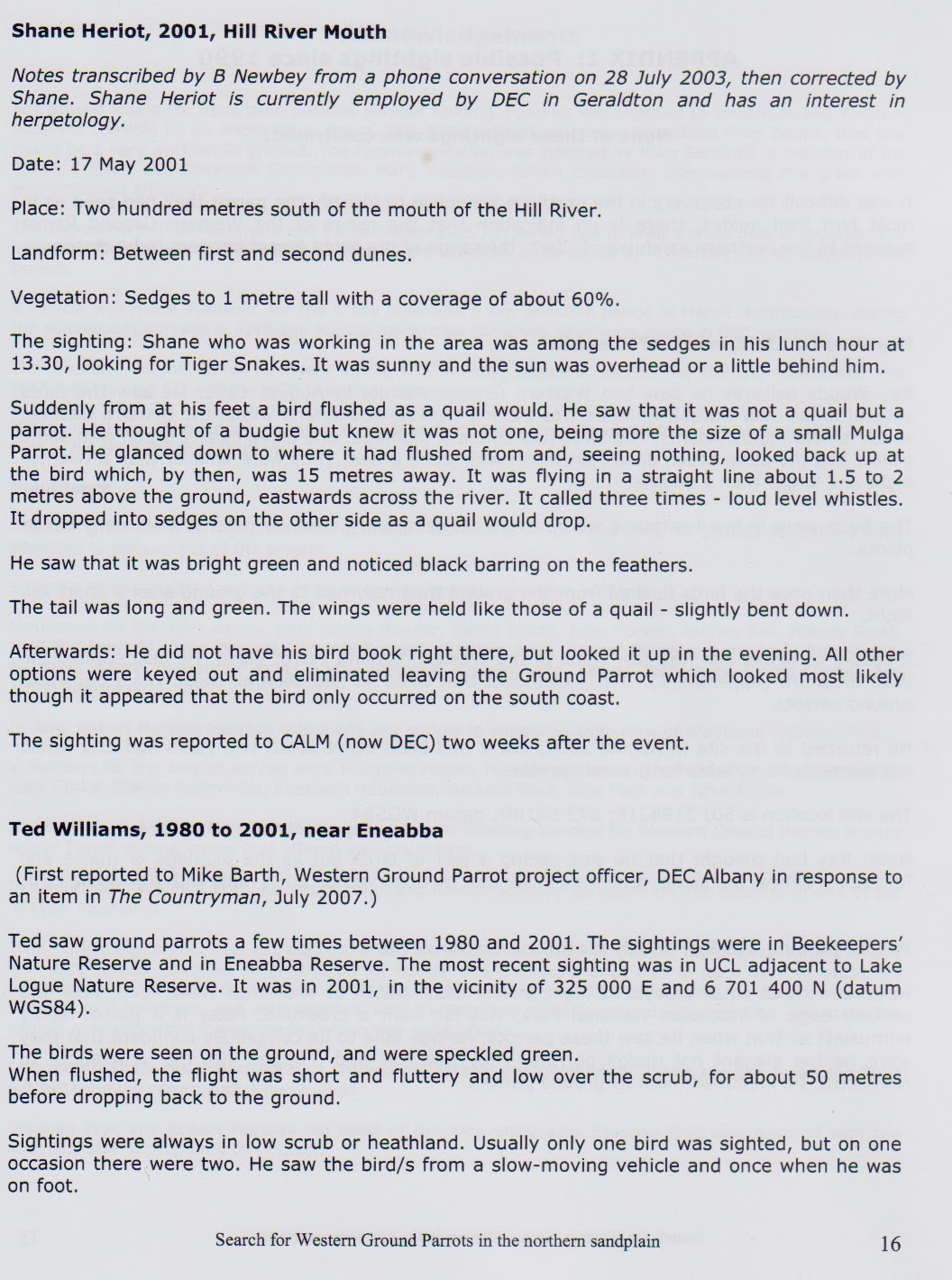The Western Ground
Parrot’s range did extend north of Perth and it is possible that a few remnant birds
are still there. The efforts to search the area have been quite limited. Below
are brief extracts from a report by Edwin Ashby published in Emu, Volume XX, January 1921, by the
Royal Australasian Ornithologists’ Union.
The area of
sandplain that Ashby refers to is roughly a right-angled triangle with the longest
axis measuring about 165 km. Much of the area is now farmland and although
there are a couple of large reserves, they are frequently burnt.
NOTES ON BIRDS OBSERVED IN WESTERN AUSTRALIA,
FROM PERTH NORTHWARDS TO GERALDTON.
BY Edwin Ashby, F.L.S.,
M.B.O.U., Wittunga, Blackwood.
S.A.
Mr. J. W. Mellor and the writer visited Geraldton, 370 miles
north
of Perth ; but, except for one day at Geraldton and part of
a day
at Moora, our observations were made separately. By this
means
we were able to cover more ground, each visiting different
localities. …….
I did not see any specimens of the Western Ground Parrot
(Pezoporus flaviventris),
but I got such an accurate description of it,
both its appearance, habits, and flight, that there is not
the slightest
doubt in my mind that 25 years ago it was scattered freely
through
the sand-plain country between Dongara and Watheroo. Since
then
the denseness of the bush has been greatly reduced by the
constant
fires. My informant—an old man of exceptional observing
powers
—was confident that fires are the real cause of the disappearance
of
this and other birds. This view endorses my own
observations. I
was not aware of the “ Ground-Parrot " having been before
recorded
as inhabiting these northerly sand-plains, and it should
still be
searched for in such districts that have been missed by fires…….








